See how scientists uncover 50,000-year-old fossils from California’s La Brea Tar Pits where saber-tooth cats and mammoths have been found
-
Scientists have been extracting huge fossils from the La Brea tar pits since 1913.
-
Many of the animals lived during the Ice Age, as far back as 50,000 years ago.
-
The tar pits have preserved an entire ecosystem, from mammoths to pollen.
Tens of thousands of years ago, dire wolves hunted ground sloths and camels while herds of gigantic mammoths lumbered past cypress trees. All of this happened where Los Angeles now stands, and many of these animals are still well preserved in the bubbling black goo below.
Since 1913, scientists have been pulling bones and other fossils out of the La Brea tar pits. In fact, some of the best evidence for these species comes from the pits, which are just steps from an art museum and office supply store.
Despite the name, the thick liquid in the pits isn’t tar. It’s asphalt. “It’s this crude oil that’s just coming up and has been up for the last thousand years,” Matt Davis, a paleontologist at the Natural History Museum of Los Angeles County, told Business Insider.
The tar pits have preserved everything from massive mammoths to specks of pollen. “That’s really rare for a fossil site,” Davis said. It’s unusual that both plants and animals fossilize in the same place, he said.
At La Brea, “you get a whole ecosystem,” he said, “and that lets us really reconstruct what the Ice Age looked like.”
During a recent visit, Business Insider visited the pits and spoke with La Brea’s scientists who showed us how fossils of mammoths, dire wolves, and other species go from covered in gunk to ready for display.
From huge mammoths to microscopic pollen, the tar pits captured everything.
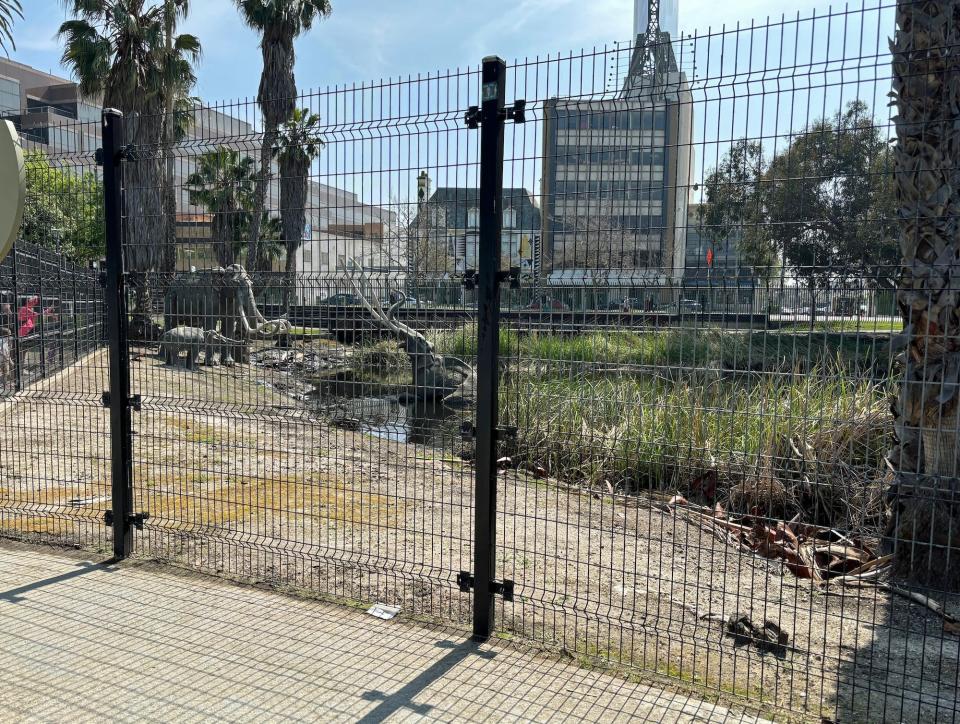
Perhaps La Brea’s most iconic sight isn’t all that scientifically accurate. A model of a drowning mammoth sinks into the asphalt as her distressed family watches from dry land.
“This is actually an excavation pit for asphalt,” Davis said. The real tar pits likely wouldn’t have looked like a black bubbling lake. “This is way deeper than they would’ve been,” he said.
But it helps visitors get a sense of how frightening getting stuck would’ve been. “It would have been horrible,” Davis said. “It would have been slow. You would’ve been stuck there for days starving until some animal ate you alive.”
The pits contain asphalt that becomes very sticky in warm weather.
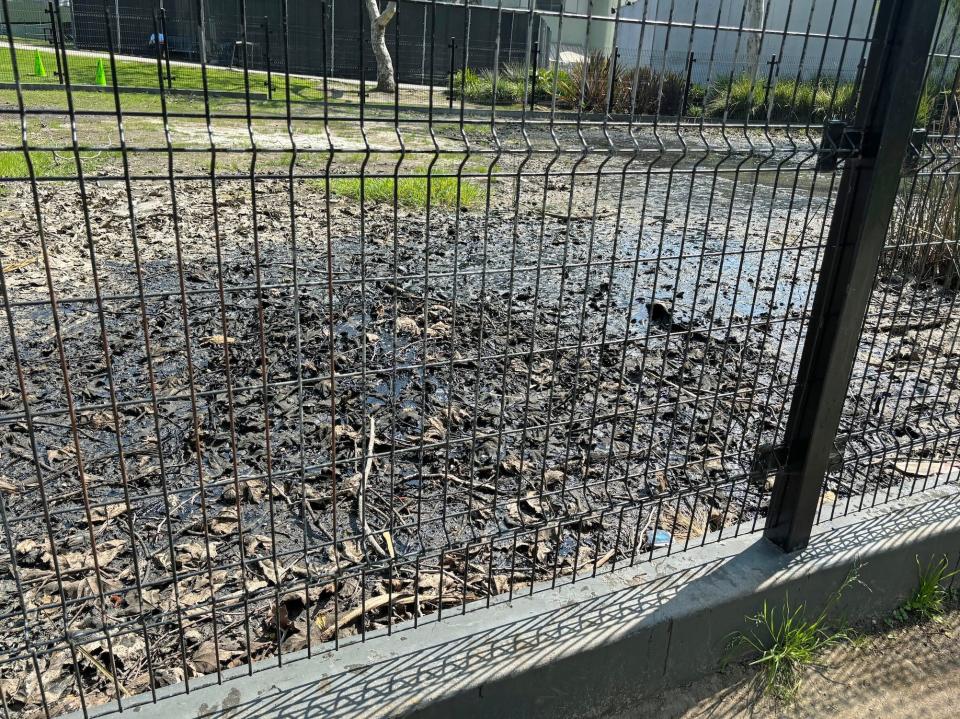

Methane, not heat, makes the sticky substance in the pits bubble. “It’s not hot,” Davis said, “it’s just gaseous.”
However, the tar pits are stickier in summer. “The viscosity of asphalt totally changes,” Sean Campbell, a senior paleontological preparator, said. “When it’s hot, it’s gooey,” he said. “It’s very likely to trap things.” Preparators help ready fossils for study and display.
There are several reasons animals might have stumbled into the tar, Campbell said. They might have been unfamiliar with the area. Water or leaves could’ve covered the sticky black oil.
“Another huge one is predation,” Campbell said. Inexperienced young herbivores trying to outrun a predator might have headed straight for the asphalt.
That’s why the makeup of the pits is so carnivore-heavy. The dying animals brought all kinds of scavengers who then got stuck snacking on their last meal.
La Brea contains over 100 pits.
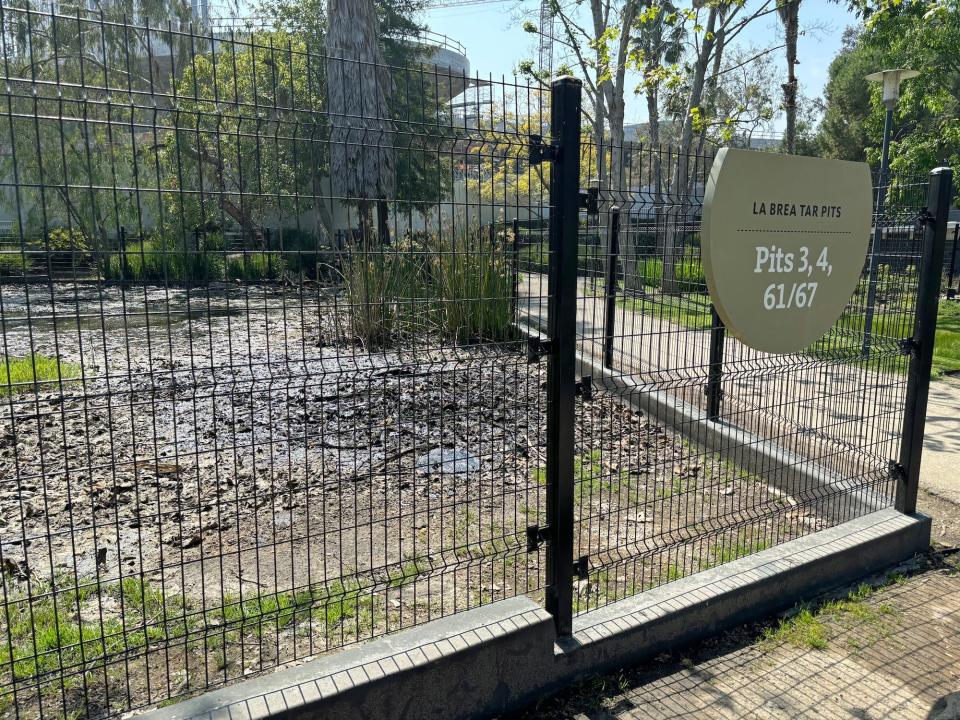

There are over 100 pits at La Brea, and excavators numbered them in the order they were dug up. “Sometimes they started with separate pits and as they dug down, they actually came together,” Davis said. For example, Pits 3 and 4 became Pit 3, 4.
The pits still hold onto anything that drifts into them.
“These leaves will be in the fossil record for a paleontologist 50,000 years from now,” Davis said of the debris covering one of the pits. In addition to sycamore leaves, future excavators will find the occasional cellphone or scooter, he said.
Scientists have excavated the pits for over 100 years but were initially focused on large bones.
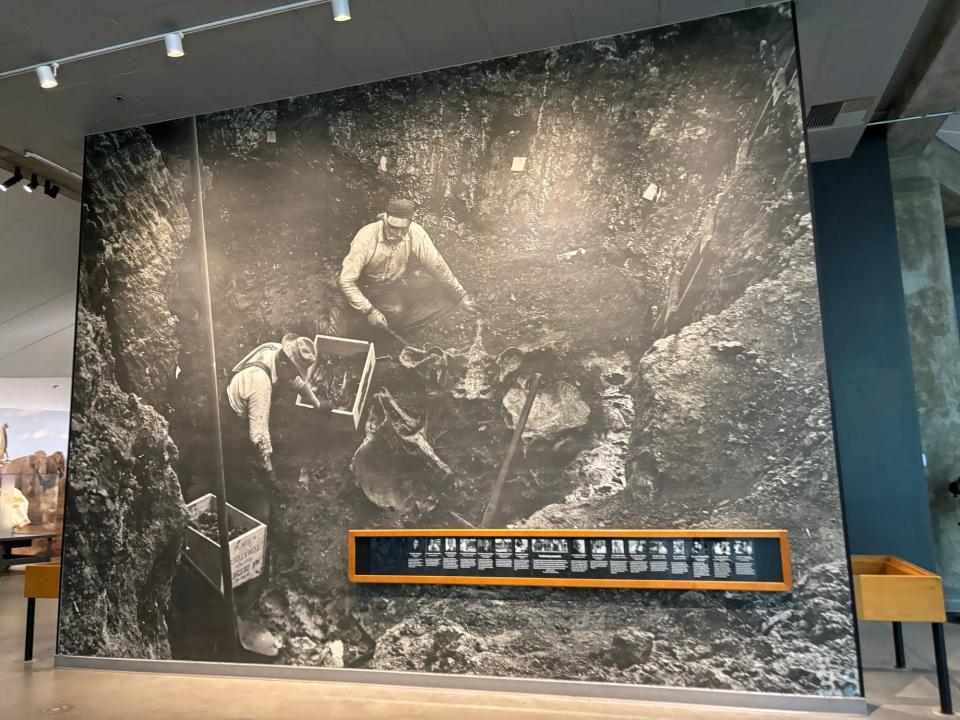

In the early 1900s, after an oil company started drilling wells, scientists started excavating the bones. In 1913, George Allan Hancock, the land surveyor’s son, gave Los Angeles County permission to dig.
It wasn’t quite the careful process it is now, Campbell said. They were mostly looking for the large bones of mammals and ignoring everything else. “They were really just trophy collecting,” he said.
“We’re much more careful about things now, and much slower, too,” Davis said.
Later excavations started looking for tiny fossils of plants, insects, and small animals.
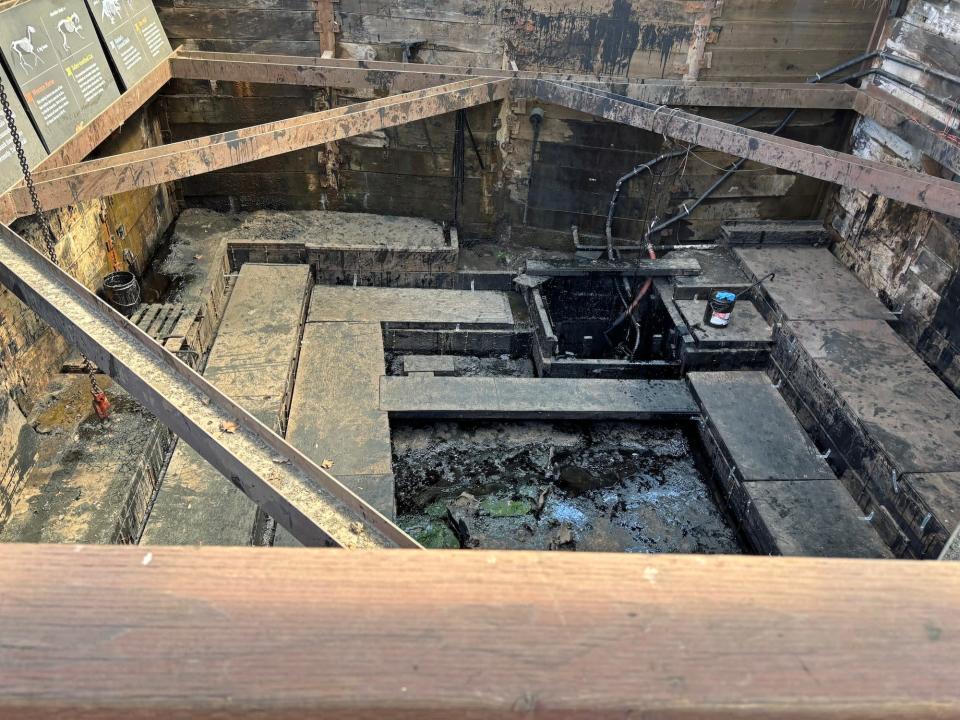

Between 1913 and 1915, there was a flurry of activity as LA County excavators looked for bones. “They dug 96 deposits in two years, some of them 40 feet down by hand,” Campbell said.
Pit 91, shown above, eventually collapsed, but in 1969, a group of scientists started excavating it again. This time they measured everything that was at least a centimeter long, discovering about 450 additional species, Campbell said.
“That’s because of Pit 91 and all the meticulous work that all those people did for 40 years,” Campbell said.
Today, the scientists collect samples of all the dirt and debris and keep anything larger than 0.841 millimeters, he said.
Asphalt is still piping to the fossils left in Pit 91, keeping it from drying out, so excavating the pit isn’t the main priority. There are still giant ground sloths, horses, and much more waiting to be found.
In 1914, excavators found 10,000-year-old human remains in one of the pits.
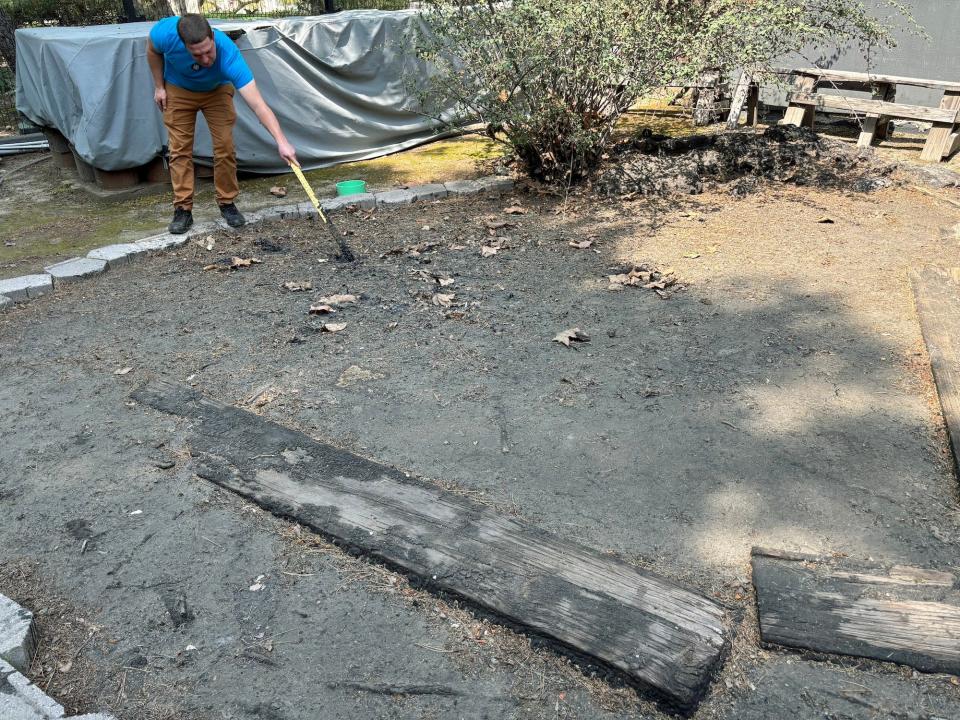

Only one human’s remains have been found in the tar pits. In 1914, excavators found the partial skeleton of La Brea Woman, a teenager who died around 10,000 years ago. Originally, some experts thought she’d been buried with a dog whose bones were close by. But the dog was later found to be 7,000 years younger.
“Because that asphalt is continually churning up, the bones get all mixed up over time,” Davis said.
Many museums have recently begun returning human remains to descendants, but much about La Brea Woman is still unknown.
It’s unlikely scientists will find more human remains anytime soon. The deposits they’re working on are too old, 34,000 to 51,000 years old, Campbell said. “It’s double the timeframe that is known for California humans,” he said.
During a 2006 construction project, workers found 16 enormous fossil deposits.
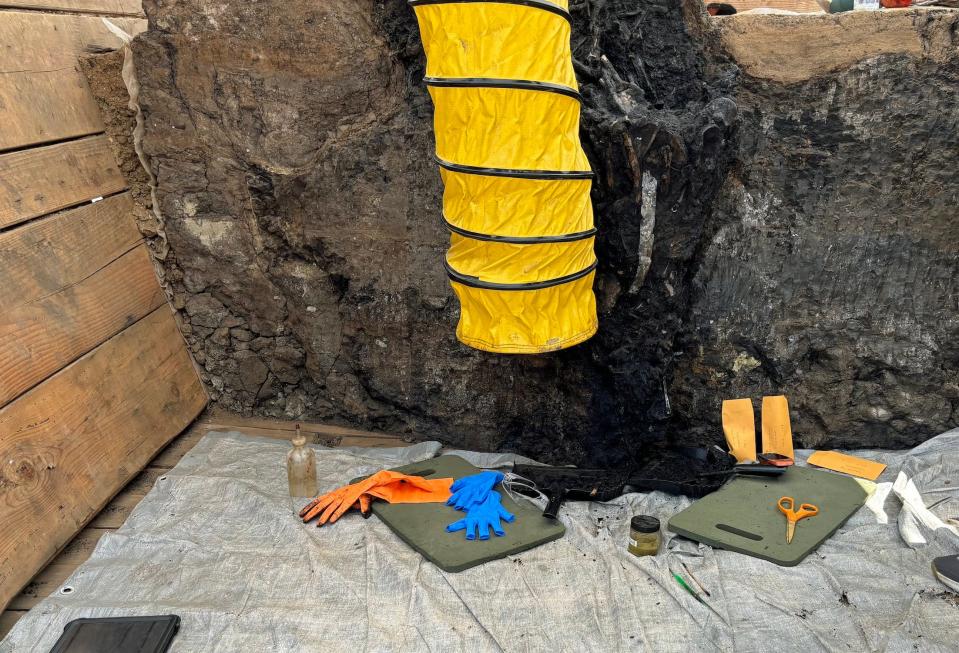

In 2006, the nearby Los Angeles County Museum of Art started digging for an underground parking garage. “If you’re doing any construction in this area, you’re going to hit fossils,” Davis said. And that’s exactly what happened.
Because regular excavation would have taken too long, workers put large fossil deposits into 23 boxes. La Brea employees and volunteers have been whittling away at what’s known as Project 23 ever since.
“It’s like a Jenga block,” Davis said. Using a combination of tools and chemicals, each fossil is carefully removed, and the surrounding asphalt and sand get sifted through fine mesh to capture smaller objects.
In the box Campbell has worked on for two years, there’s a huge range of life: deer, coyote, dire wolf, saber-tooth cat, predatory birds, dung beetles, xanthium pods, and acorns, just to name a few.
It’s taken almost 20 years to sort through the large fossil deposits from Project 23.
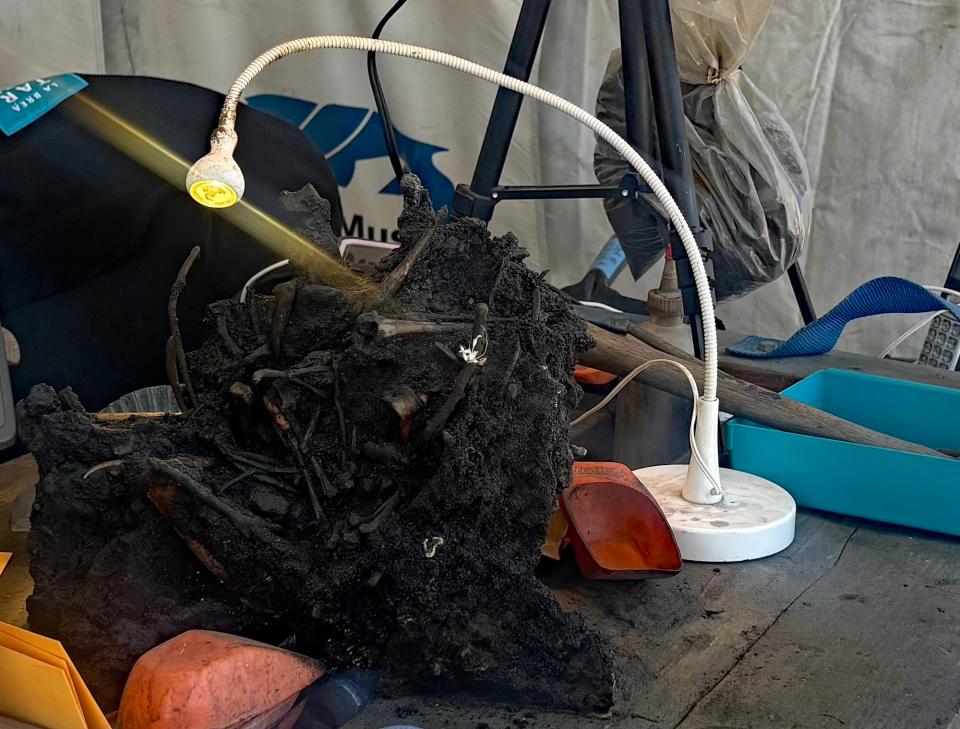

The deposit preparator Laura Tewksbury has been working on started at 86,000 pounds, measuring 10 feet by 10 feet. Now it fits on a table. There are potentially still thousands of bones left in the chunk.
A fossil deposit is so jumbled, it’s like a game of Jenga to remove them.
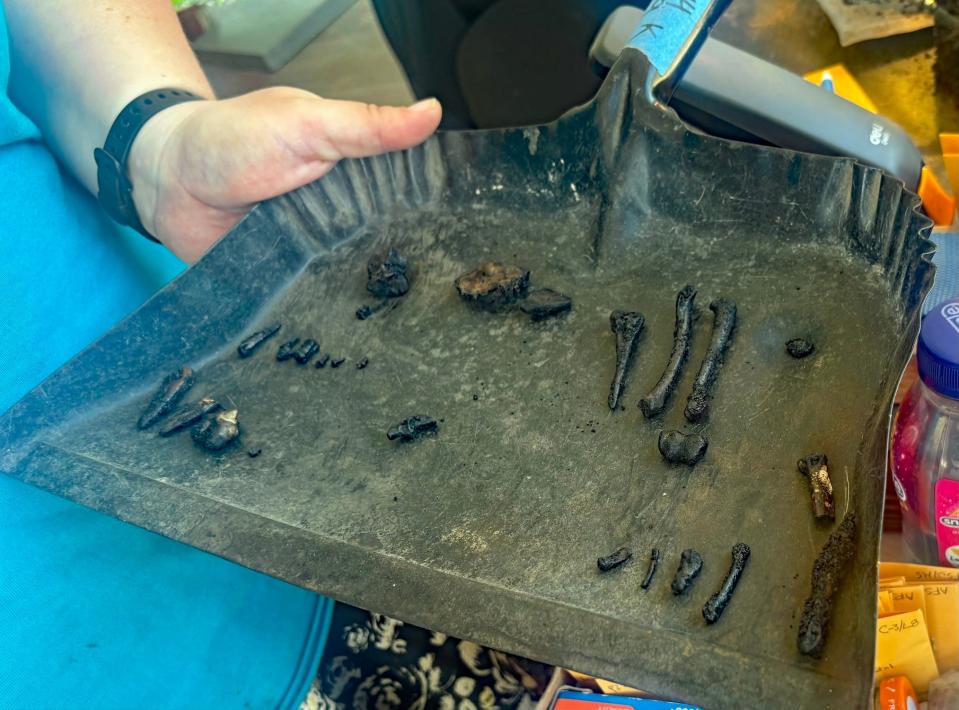

For each fossil Tewksbury removes, she writes a data tag. One belongs to a desert cottontail rabbit, the same species a group of excited kids saw still hopping around the museum grounds.
“Our story here is so much about extinction, but it’s also about survival because almost everything that we have here is still around,” Tewksbury said. The megafauna died out about 13,000 years ago, , but the smaller animals are still around.
There are still plenty of species in the tar pits that could use more research.
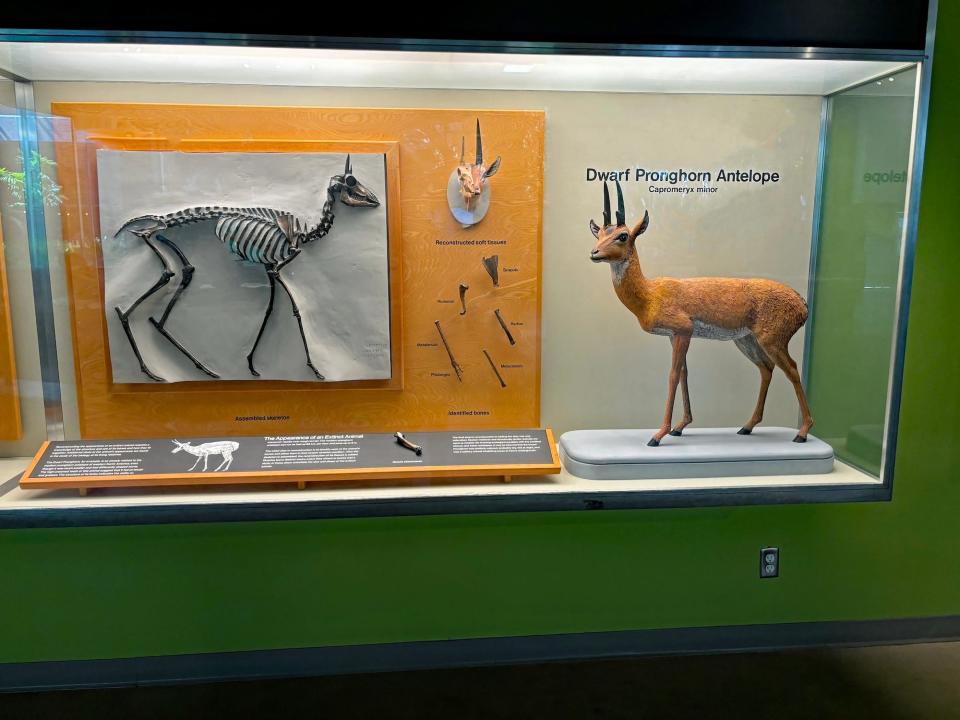

Once Tewksbury has extracted the fossils, they go to the lab for further identification. She’s hoping she’s found the lower jaw of a Capromeryx minor, or dwarf pronghorn. It’s an antlered, hoofed mammal.
The species is understudied, Davis said, but it’s one of the few small species that went extinct during the Ice Age. He’s not really sure why. “All the modeling I’ve done says it should be alive,” he said.
Visitors are able to see fossils being studied and prepped for display.
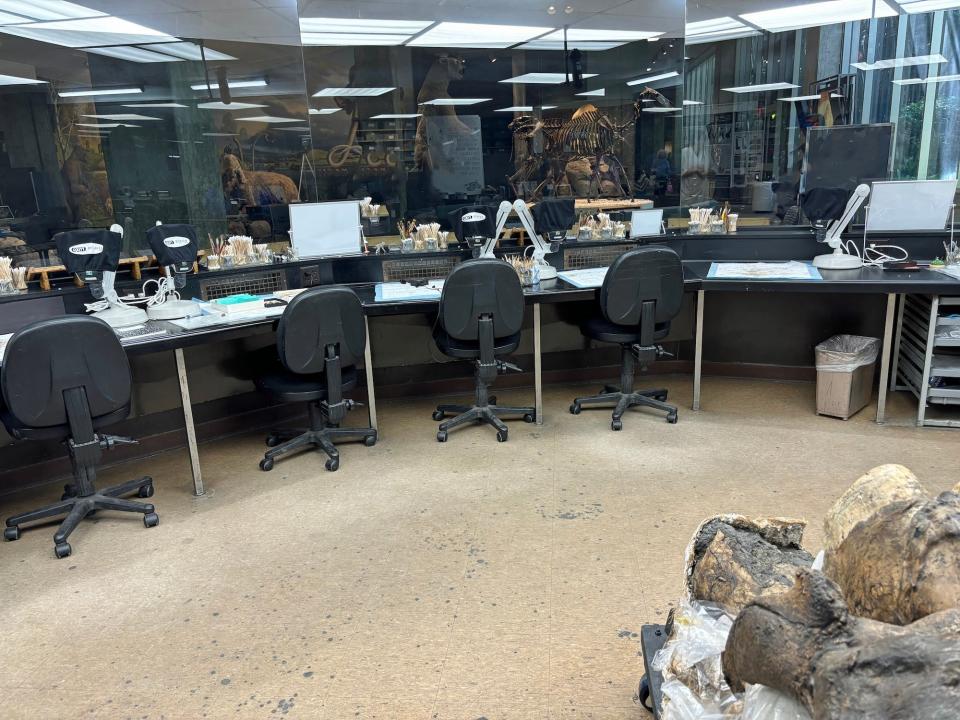

Large windows separate the laboratory from the museum, allowing visitors to watch the preparators and paleontologists work.
“We’re one of the main exhibits in the museum, which is pretty cool,” Connie Clarke, an assistant preparator, said.
Fossils that come to the lab still need cleaning and sometimes repair.
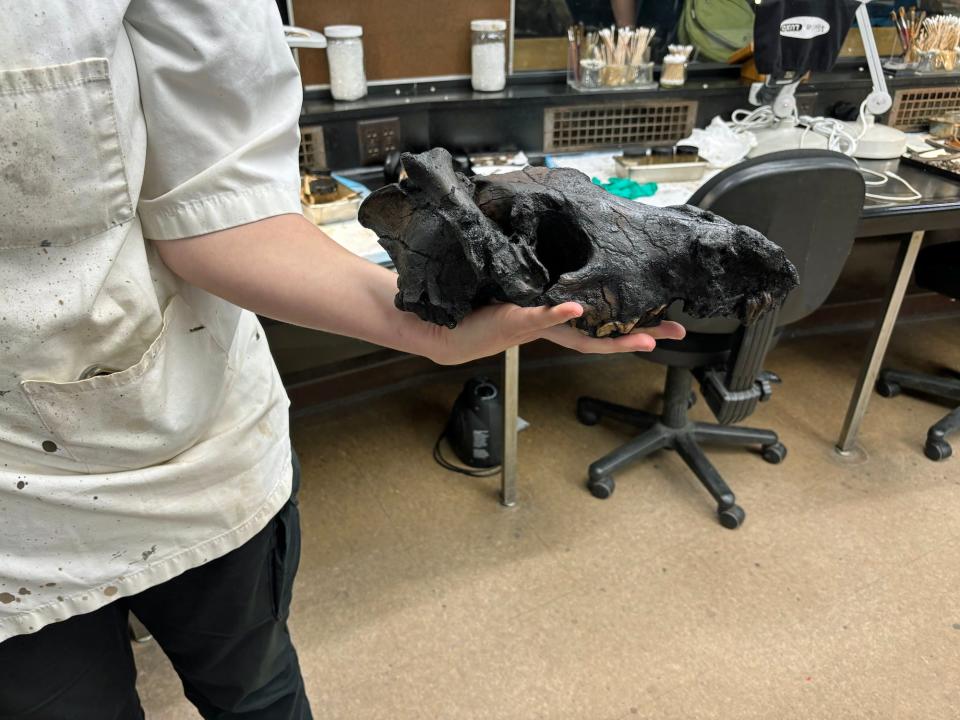

The samples taken out of the Project 23 deposit boxes still need work after they’re freed from the surrounding asphalt and sand. For example, a dire wolf skull had a tibia or a lower leg bone cemented near the eye socket.
Dire wolves are now extinct but were bigger and bulkier than today’s species of gray wolves.
“This is what we spend a lot of time doing, is trying to expose all the features like these teeth from this matrix that’s currently covering it,” Clarke said.
The tar pits are full of predators, especially dire wolves.
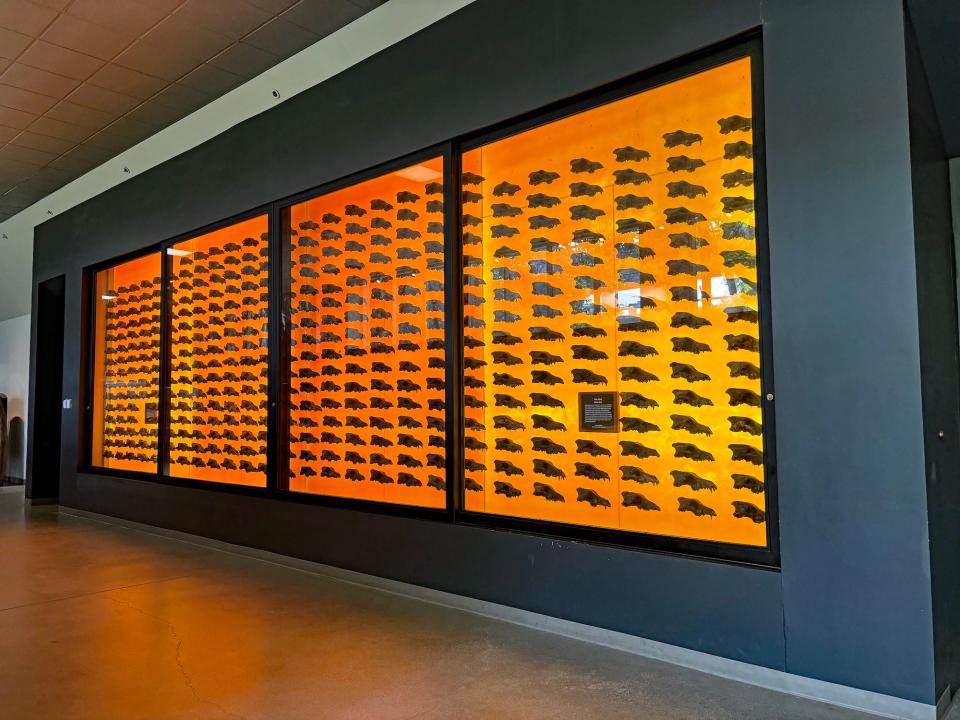

Dire wolves are the most common species pulled from the tar pits. There’s an entire wall of their skulls at the museum, but it’s just a fraction of the whole collection.
With that many specimens, it’s easy to see differences between individuals, like wear patterns on their teeth. “There were times when life was tougher,” Davis said. “You see more breakage in the teeth as they were gnawing on bones versus just eating flesh.”
Cleaning fossils takes chemicals and a lot of patience.
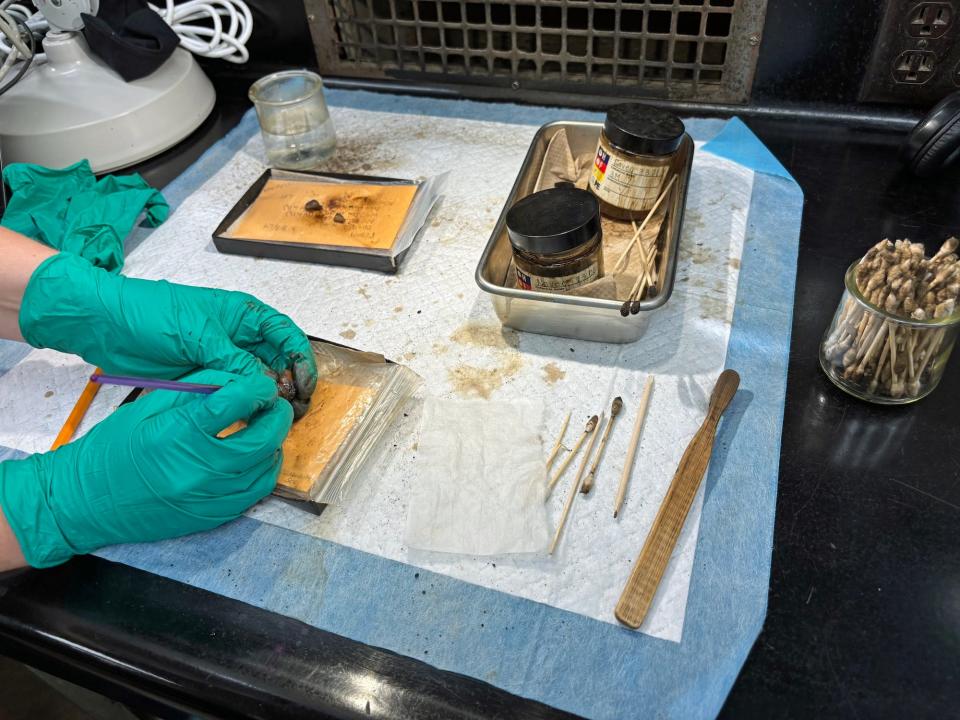

Many paleontology labs work with fossils that are bone turned into stone, Clarke said. “We’re dealing with just pickled bones, basically, and hardened asphalt.”
They use a chemical Novec 73DE that softens the matrix or surrounding material. The preparators can then use cotton swabs and small sticks to clean away at the asphalt.
The debris early excavators once discarded holds a wealth of mini fossils.
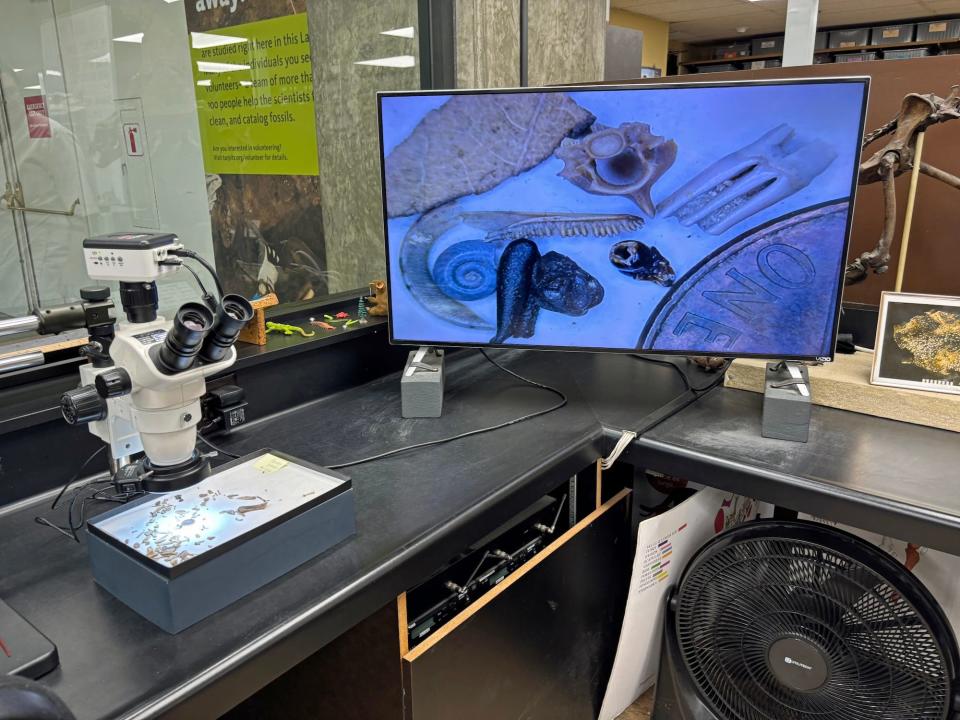

The preparators keep the matrix that surrounds the fossils because it contains microfossils, Clarke said.
A large screen helps magnify what’s under the microscope because the microfossils are so tiny. A penny shows the scale of a miniature wood rat tooth, snake backbone, lizard jaw, freshwater shells, and juniper seed.
“It’s just sort of a whole ecosystem,” she said.
Meet Zed, a 37,000-year-old Columbian mammoth.
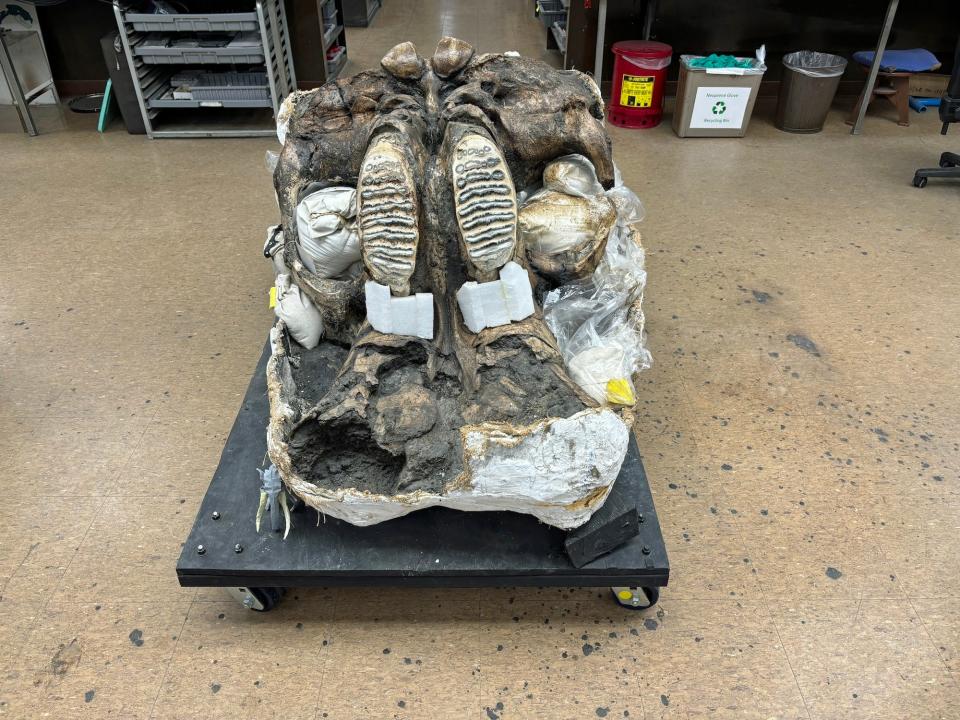

One of Project 23’s biggest discoveries, literally, was an almost complete Columbian mammoth skeleton. The employees call him Zed.
“He’s special,” Clarke said. “We usually don’t get complete individuals.” Preparators have found over 80% of his bones.
They’re continuing to clean and stabilize Zed’s skull before he goes on display.
Repairing a mammoth skull is delicate work.
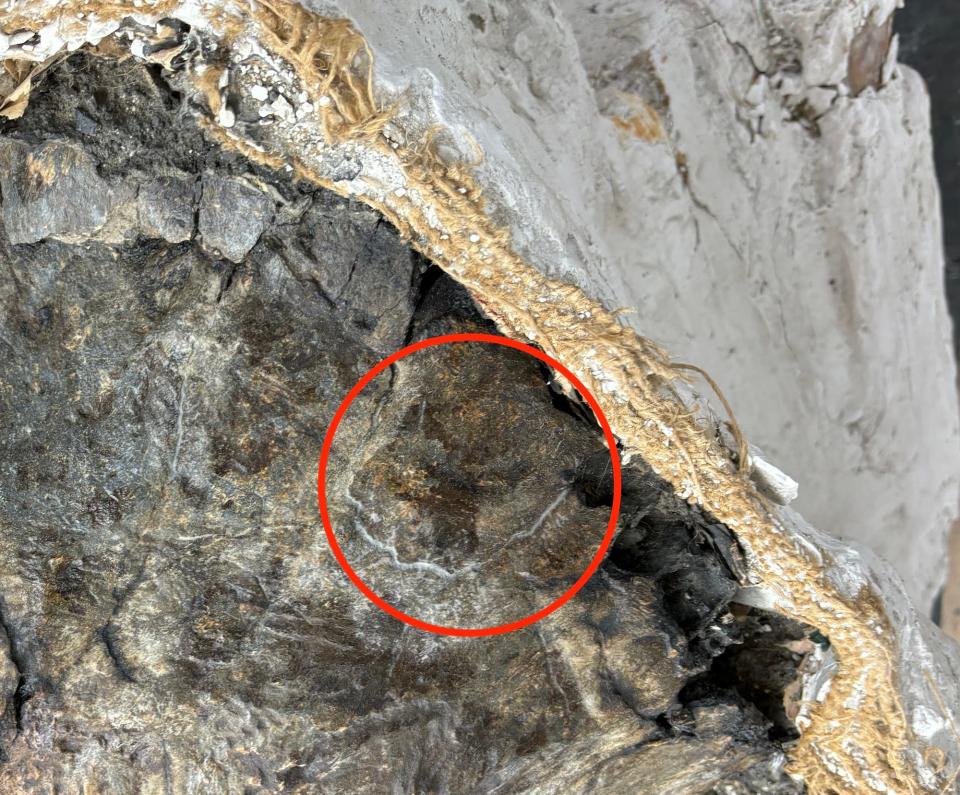

Part of Zed’s preparation includes using archival glue and archival paper to repair some fissures.
“He’s a delicate old man,” Clarke said. “Lots of cracks.”
During the Ice Age, no land animal was as big as the Columbian mammoth.
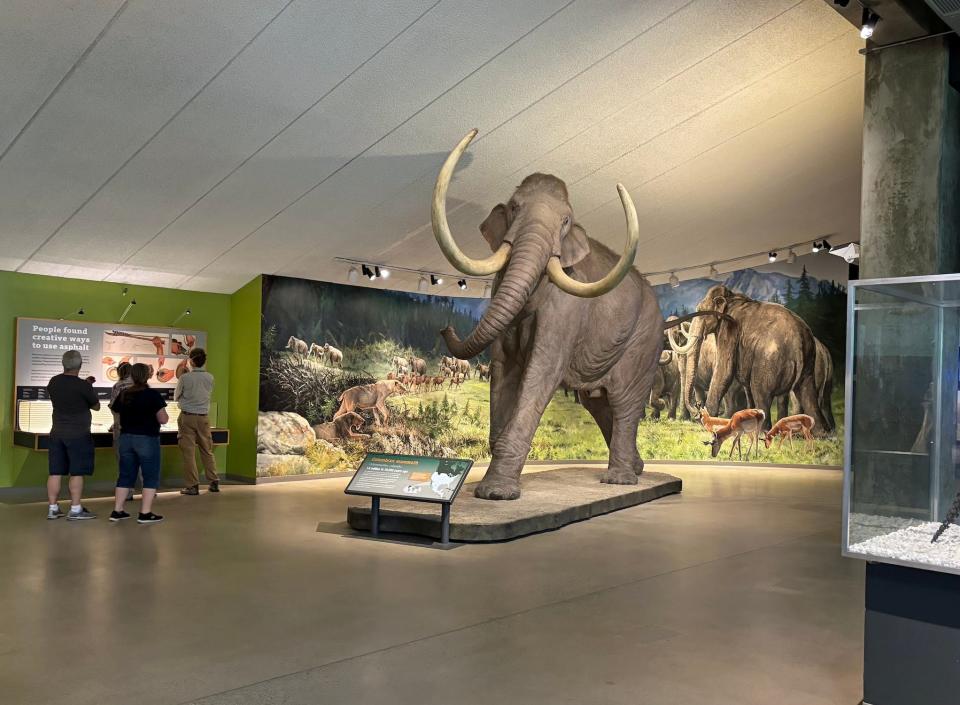

The Columbia mammoth was the largest land animal in North America during the Ice Age, Davis said.
It was bigger than a woolly mammoth but not as furry. Los Angeles’ weather was a little bit cooler and wetter but not covered in ice like the northern parts of the continent.
That’s a misconception about the Ice Age, Davis said. “We don’t live in a world of Star Wars planets, where you just have one habitat for the entire planet.”
La Brea’s collection is overflowing.
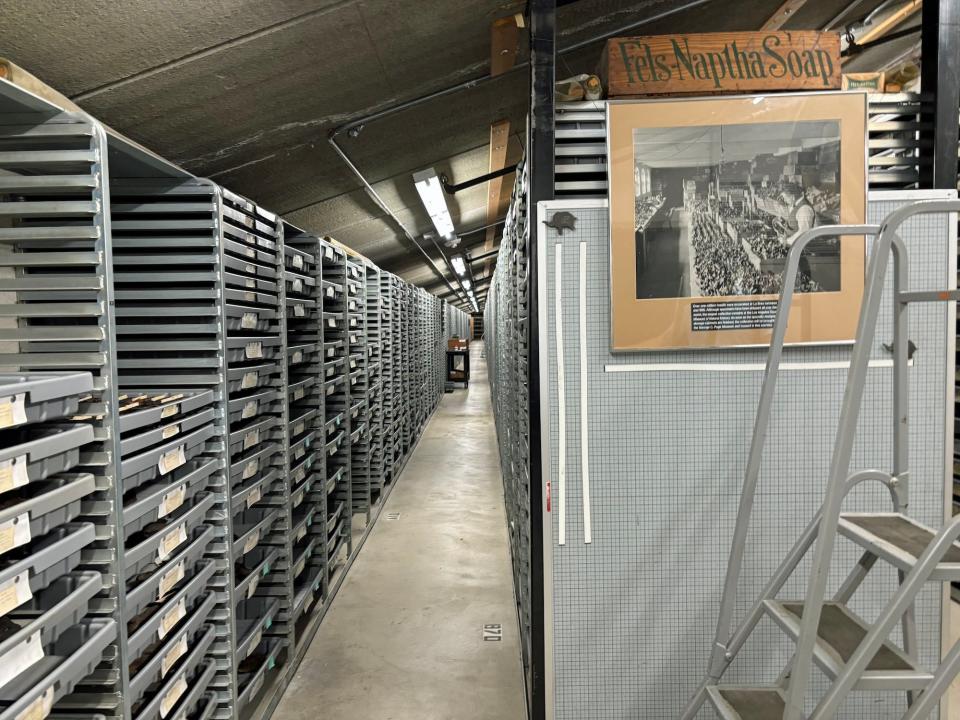

The La Brea museum is planning an expansion because it’s running out of space.
The collection holds the bones of over 3,600 individual dire wolves. It’s such a wealth that paleontologists can actually afford to destructively sample some for radiocarbon dating, Davis said.
“You have to destroy a little bit of the bone, carve it out, pulverize it,” he said. “We have so many bones, that’s not really a problem.”
The collection attracts scientists from all over.
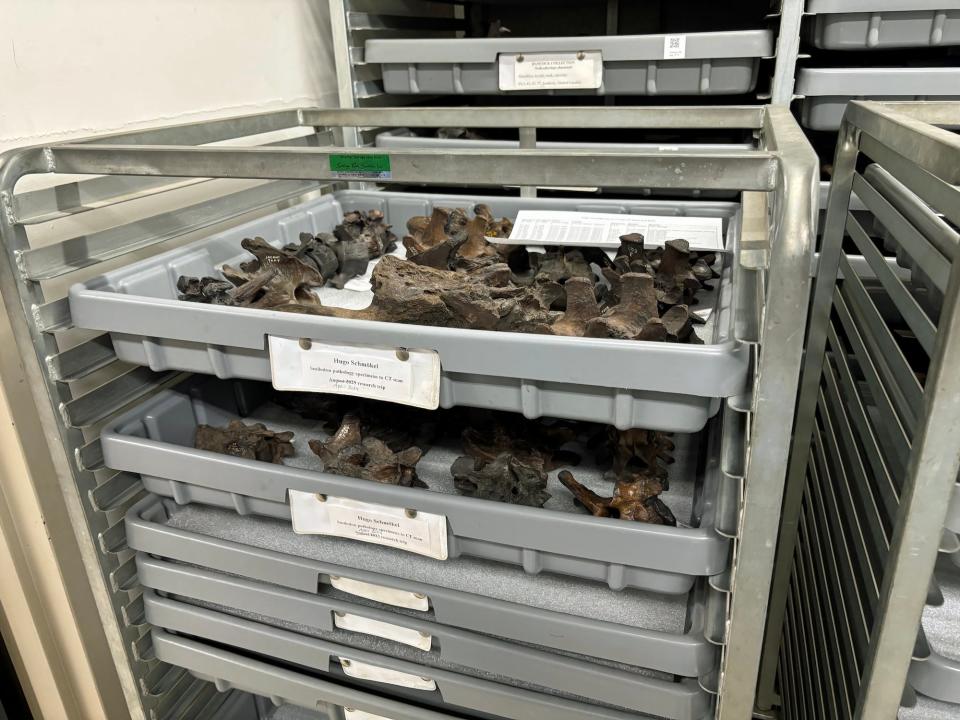

Not every species found in the pits is as abundant as the dire wolves. Excavators have only found a few hundred deer bones, Campbell said.
Still, there’s enough to keep a team of scientists with a variety of expertise busy, Davis said.
“We have enough fossils that we could have 10 times the staff, 10 times the paleontologists working here,” he said.
The abundance of fossils has helped researchers learn about saber-tooth cats’ social lives.
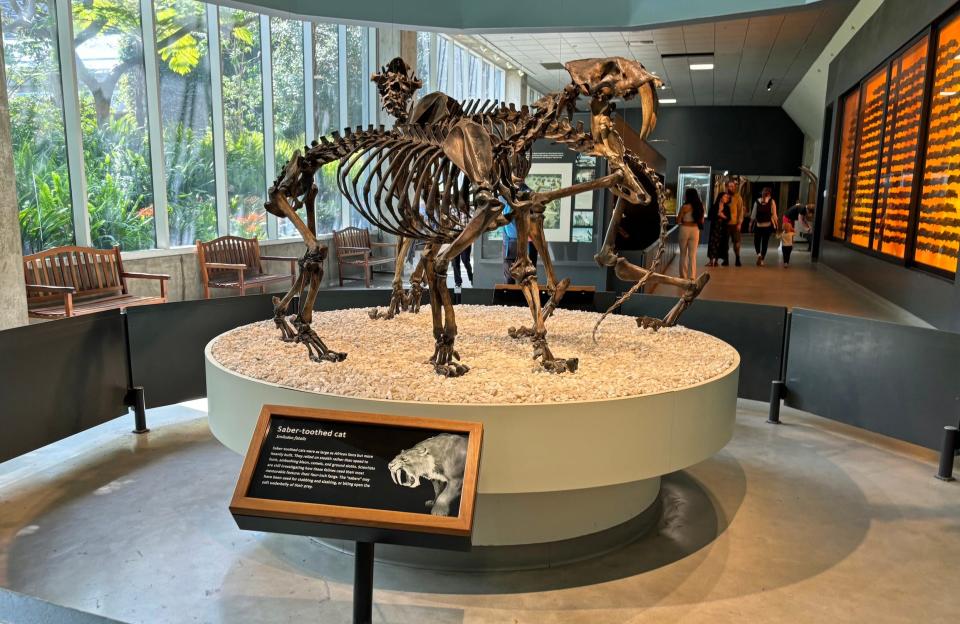

Another common predator that inhabits the tar pits is saber-tooth cats.
In a recent paper, scientists described one older cat with hip dysplasia, a painful condition that affects modern house cats, too.
Since it would have made it difficult for the animal to catch prey, the paleontologists suggested members of its group shared their food with the injured felid.
The American lion was a fearsome predator.
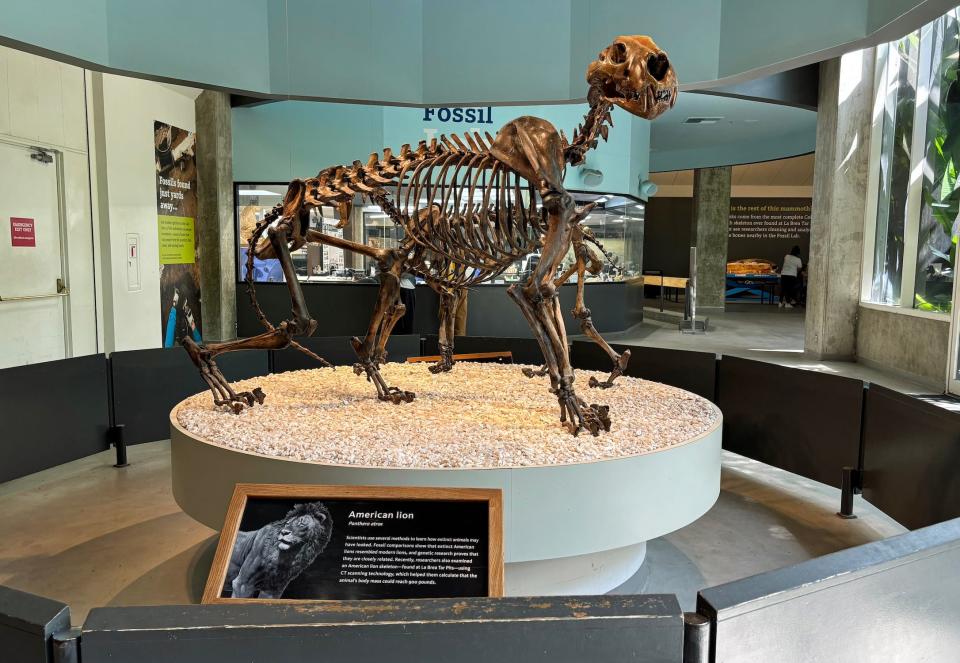

Lions also stalked prey around the tar pits. The gigantic American lion may have weighed up to 900 pounds, over 300 pounds more than a typical lion today.
They had retractable claws like house cats and were big enough to hunt bison and horses.
To get a feel for what Los Angeles once looked like, visit the Pleistocene garden.
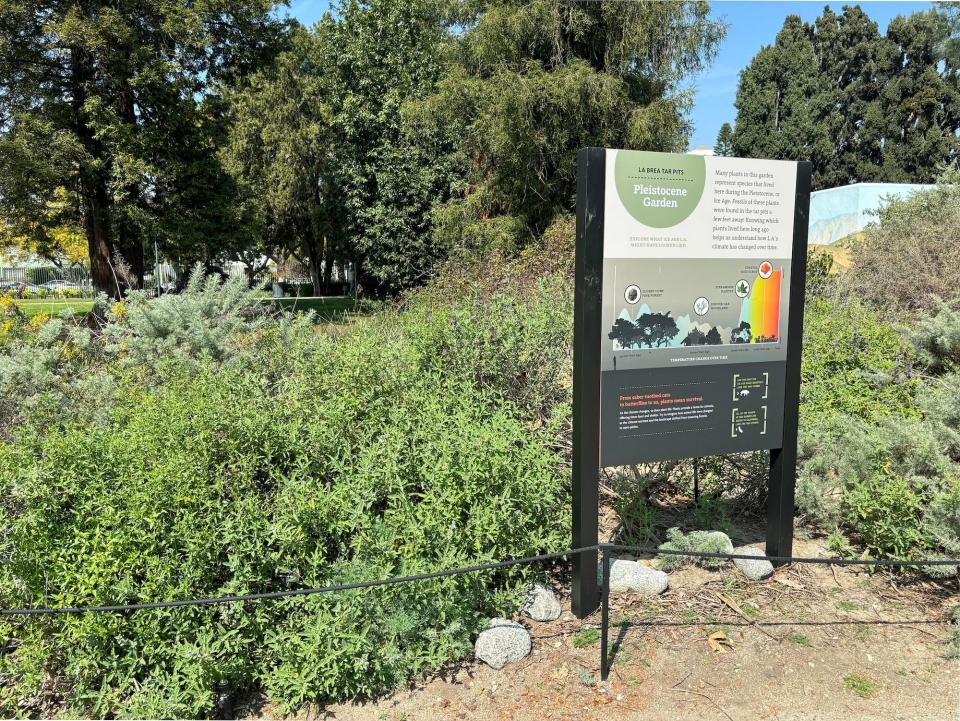

The megafauna like dire wolves, mammoths, and saber-tooth cats attract a lot of attention from La Brea’s visitors. But the plants are also part of the story.
The Pleistocene garden contains plant species found as fossils in the asphalt. They help document changes in California’s climate and vegetation. Over 50,000 years, the landscape changed from a pine forest to woodland to a sage scrub habitat.
From an environment full of trees, it became more open with more grasses and shrubs. Around 7,000 years ago, the region looked similar to modern LA’s scrublands.
The museum’s founders wanted to create a Pleistocene park.
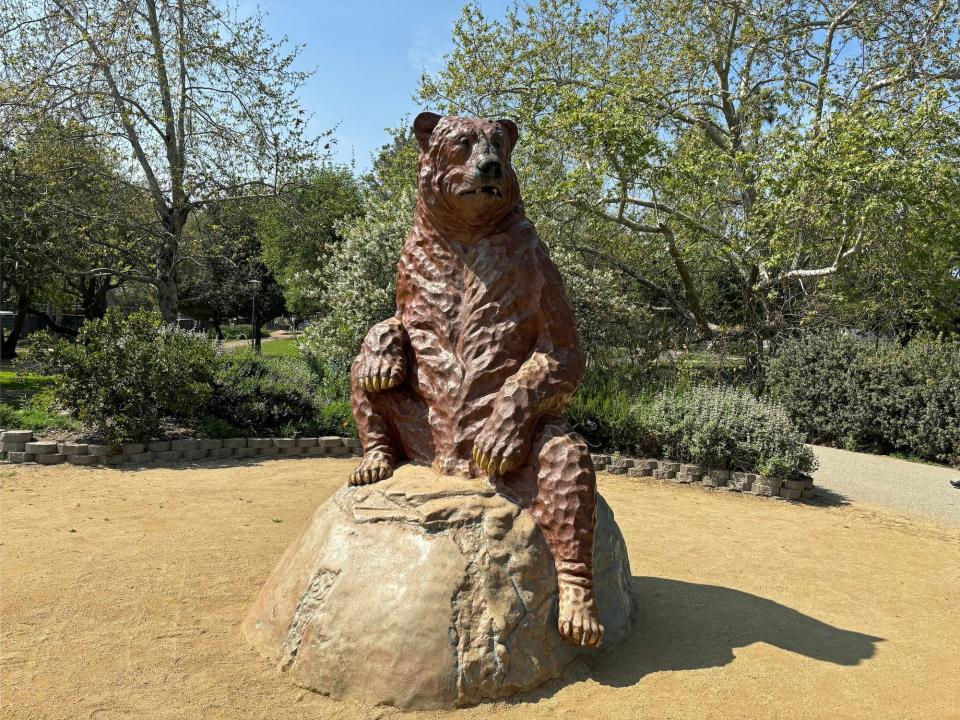

In the 1920s, Herman Beck created sculptures of the La Brea animals, including the short-faced bear. Even back then, the museum’s founders wanted to make a Pleistocene park, Davis said.
“They were using those kind of terms 100 years before Jurassic Park,” he said.
The short-faced bear was taller than modern grizzly bears. “It would’ve been absolutely terrifying,” Davis said.
An iconic scene runs along the museum’s exterior.
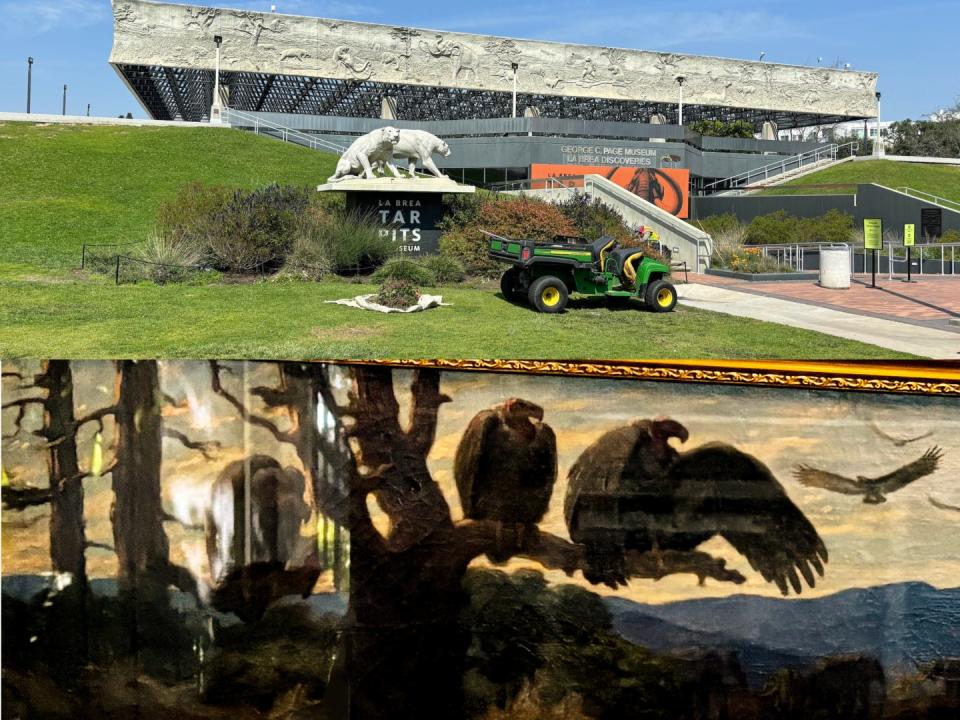

Paleoartist Charles R. Knight created a large mural of the tar pits in 1925, and a modified recreation now runs around the museum’s fascia.
The mural lacked the smaller animals that would have filled the landscape, but at least one detail is very true to life.
“This tree appears in just about every tar pits painting, this very particular curved branch,” Davis said. That’s because excavators actually found that tree, curved branch and all, in the asphalt.
Read the original article on Business Insider

